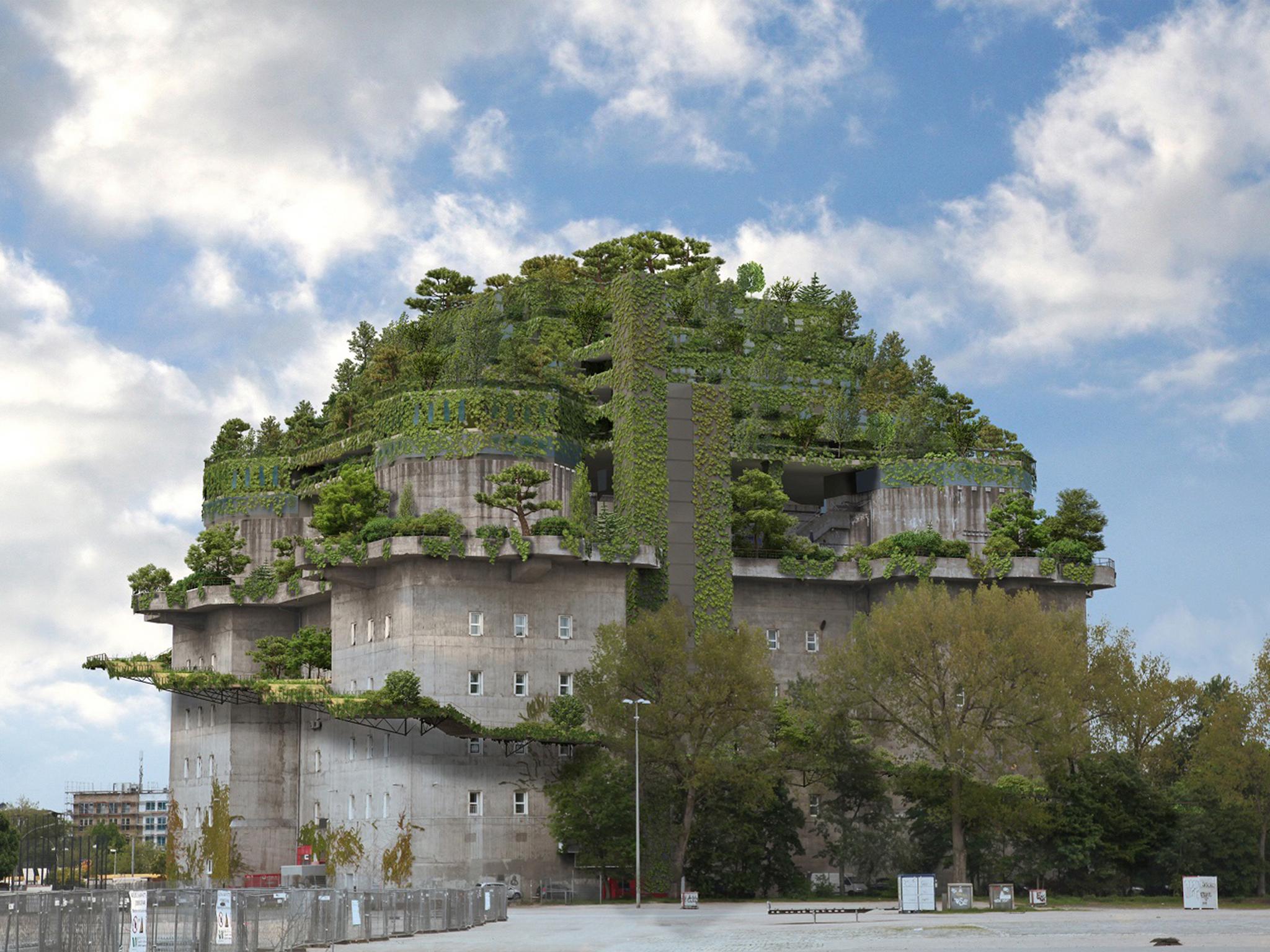Former Nazi bunker to open as hotel
Air raid shelter in Hamburg was built to shield 18,000 civilians from Allied assault

A former Nazi bunker in Hamburg, Germany, built by forced labourers to shelter tens of thousands of Germans during Allied air raids in the Second World War, will soon house hotel guests.
The 136-room guesthouse, which is being designed by the NH Hotel Group, will open in mid-2021 on top of the bunker St Pauli, one of thousands of air raid shelters built across the country by the Third Reich.
The hotel will be part of a five-story tiered garden atop the bunker.
Developers and project managers for the hotel could not be reached for comment, but a spokeswoman for the Spanish hotel chain, Juliane Voss, said they were “aware of the history of the building” and wanted to show “responsibility” for it.
“We understand it’s a sensitive topic,” Ms Voss said, adding that there were plans for a memorial on the site. “We would like to send a positive signal to the city of Hamburg.”
Ms Voss said that the establishment was not a luxury hotel but “a design and lifestyle hotel in the upscale segment with an open approach to the local community.”
By the end of the war, more than 1,000 bunkers had been built in Hamburg alone, more than any other German city, according to the city’s tourism website. Today, about 650 still stand.
The St Pauli structure is one of the largest. Designed to hold 18,000 people, it has extra-wide entrances so mothers could push children through in strollers.
The imposing castle-like structure, 246 feet wide and 115 feet high, is also called “Hochbunker,” which translates to “high bunker.”
During heavy bombing during the summer of 1943, at least 25,000 Germans sought shelter there.
After the war, discussions to destroy the structure ended when it became clear that the amount of dynamite needed to bring its thick walls down would blow the residential area around it to smithereens.
The space was used as a television broadcasting hub in the 1950s and, more recently, as a work space for musicians and artists and a venue hosting live concerts and nightclubs.
It is not the first Nazi-era site to catch the eye of a private developer in Germany.
In 2018, in the former Gestapo headquarters in Hamburg, where Jews, gay people, Roma and other people targeted by the Nazis were tortured and murdered, a cluster of high-end apartments, luxury boutiques and offices opened for business. Protests ensued.
A never-completed holiday resort that Hitler had intended to be used for workers through his “Strength Through Joy” project has been converted to luxury apartments. The massive complex, originally known as the Colossus of Prora, stretches for miles along the island of Rugen off Germany’s Baltic coast. Recent guests gave the accommodations an 8.4 rating on Booking.com.
The challenge when integrating these sites into modern-day landscapes is “how to reconcile commemoration and consumption or consumerism,” said Thomas L Doughton, a senior lecturer at the College of the Holy Cross in Massachusetts who takes students on tours of Holocaust sites across Europe to explore the politics of memory.
Mr Doughton said there were parallels to places in the United States, including plantations where African Americans were once enslaved and the sites of atrocities against Native Americans, that have been commercialised at the expense of a blunt reckoning with historical oppression. Some of these places’ paying customers are descendants exploring their heritage.
Other travellers, he said, are drawn to the “pornographic” aspect of violence. “Dark tourism,” as the growing trade is known, involves profiting from places that were once sites of shame and horror, contributing to what Mr Doughton calls the “gentrification of terror.”
“Part of the concern with some people in Hamburg, as well as in other locations in Europe and elsewhere,” he said, is “that the real significance of some of these sites will become lost.”
Tobias Helbing is part of a volunteer group in Hamburg that is organising the rooftop garden, known as the Hilldegarden, for which 4,700 shrubs, plants and trees are growing in wait to be hoisted atop the bunker.
“It’s time to move on,” Mr Helbing said, but “very respectfully.”
In addition to the garden, which will be open to the public, the group is creating a 560-square-foot exhibition space to commemorate the structure’s past.
They are collecting artefacts and interviewing locals who were protected by the bunker, as well as tracking down the people who were forced to built it, about whom little is known.
“We don’t want to hide the history,” he said. “We want to make it more visible and more transparent.”
The New York Times
Join our commenting forum
Join thought-provoking conversations, follow other Independent readers and see their replies
Comments
Bookmark popover
Removed from bookmarks